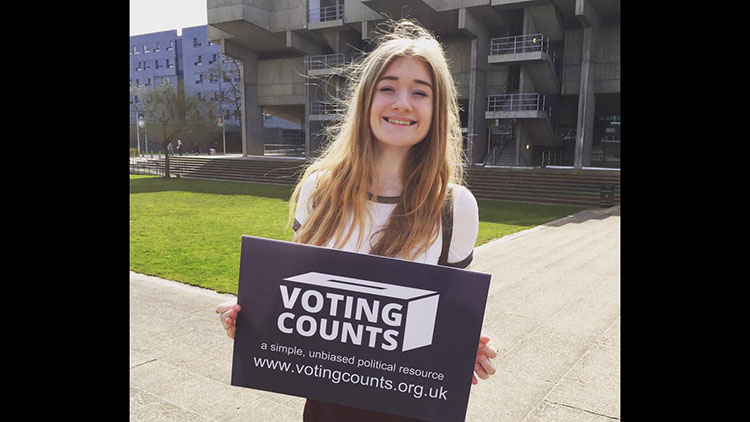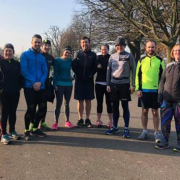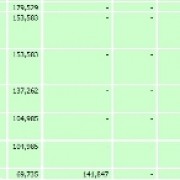
A Voting Counts volunteer encouraging youth voting Pic: Voting Counts
While statistics from past general elections suggest a downward trend in voting among young people, close to half of voters who have submitted application for voting registration for the upcoming election are under 25.
In the latest population statistics from the Office for National Statistics, it is documented that our East London boroughs have over 123,000 youths aged between 18 and 24 with the ability to vote. Surveys suggest that these votes could have an important impact on the upcoming election.
If statistical trends of the last two decades continue, however, less than half of these youths will cast ballots in the general election on June 8. In 2010 youth voter turnout was 49 per cent of those eligible but in the most recent 2015 general election the BBC reported that turnout for youths was down to 43 per cent.
In the mid to late twentieth century, around 66 per cent of young people would turn out to vote in general elections. Since the Labour party won under Tony Blair in 1992 by an overwhelming majority, this statistic has declined drastically.
However, recent voting registration polls suggest that this general election could be another turning point with more youths realising the importance of their individual votes.
In fact, on the day this year’s general election was called more youths registered than any other age group, perhaps seeing it as their call to action in light of recent election results.
Voting Counts is a political resource aiming to inform and encourage youth voting in the UK.
Rachael Farrington, student and founder of the volunteer-run organisation, told Eastlondonlines: “I think young people have really seen the impact of voting. You only have to have glanced at the news in the past year to see Brexit, Trump, Macron and realise that if enough people mobilise it can have a profound impact on the country.”
It is possible that many students still feel disillusioned by the EU referendum results as nearly 90 per cent of the eligible student population voted, yet only 15 per cent of the young electorate voted to leave the EU.
This has not seemed to deter students and youths from registering in the upcoming election though, many of whom are predicted to vote for Labour, with most of their concern lying in the state of the NHS and education.
A recent survey by the Higher Education Policy Institute found that 93 per cent of youths have registered to vote along with 55 per cent planning to vote Labour with consideration for tactical voting.
Farrington also suggests that students and youths often feel too ill-informed on politics, history and current events to cast a vote. To help youths realise the connection between their own livelihood and politics, Farrington says: “Think about what you care about, is it the education of yourself or children, the local community spaces, healthcare, or jobs in your local community? Usually, whatever issue it is that you care about is influenced by politics in some way.”
While registration statistics appear hopeful, this is not always a certain indicator as to actual voting numbers. Many organisations which encourage youth voting in underrepresented and marginalised communities, for example, are struggling with the funding and time constraints of the current election.
Universities are beginning to assist students in the registration process. The Goldsmiths College Students Union, for example, is providing students with postal vote application forms, hanging reminders via flyers around campus and on social media, and by informing them whether they should cast votes in their home constituencies or where they are studying.
The deadline for registration is on May 22. Click here to register.




